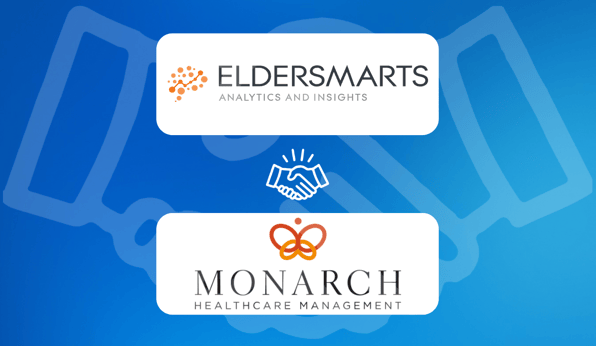A Quick Guide to Navigating Changes in Senior Living Regulations

When residents and family members trust you to provide safe, secure, and healthy residential care, you’ve got to live up to some big expectations. But they aren’t the only ones holding you to a high standard. Government agencies are also carefully monitoring senior care communities to ensure they maintain compliance with state and federal regulations.
All long-term care organizations must be licensed by state agencies, though specific state regulations vary depending on location. Nursing homes are regulated by the federal government, and are overseen by The Centers for Medicare and Medicaid Services (CMS), along with other skilled nursing organizations. Assisted living, independent living, and senior living communities may need to comply with some federal regulations, but generally, they are governed by state agencies, including the Department of Public Health. Memory care is considered a specialized form of assisted living, and as such, it’s also regulated by the state in which the organization is located.
The regulatory waters can be choppy and uncertain, and it isn’t always smooth sailing for senior living communities that have trouble prioritizing regulatory compliance. Fortunately, the right software solution can help these communities manage and report data to avoid negative consequences for the community or its residents.
Below, we’ll take a look at why regulatory compliance is so important for senior living communities and how changes in state regulations can be managed by an all-in-one senior living software solution.
The Impact of Senior Living and Assisted Living Regulation Changes
Federal and state regulations of nursing homes, assisted living organizations, and senior living communities can fluctuate over time, and it can be hard to keep up with what’s required. In fact, the most recent “Assisted Living Regulatory Review” from the National Center for Assisted Living (NCAL) found that over a year, nearly a third of all U.S. states reported regulatory changes. Regulations for assisted living organizations encompass many different areas, which may include:
- Licensure updates and requirements
- Medication management
- Staffing and occupancy requirements and ratios
- Directors and staff training/education requirements
- Medicaid and reimbursement policies
- Infection control policies
- Quality and level of care requirements
- Emergency preparedness plans
Specific regulations, reporting guidelines, and compliance criteria will vary depending on the state in which the community is located and the standards for quality care in that state. This can be especially challenging for care providers who operate multiple communities in different locations.
However, no matter how difficult, compliance is critical to the safety and well-being of both residents and staff. If compliance is neglected, there could be serious consequences. Compliance methods and management will also vary between states, but most of the time, regulatory agencies will conduct regular inspections to ensure regulations are being met. If they are not, or if there have been outside complaints lodged, the inspections will likely increase. Senior living communities that cannot improve their compliance can face having their licenses revoked and, eventually, closure.
While it can seem like an impossible task to track, manage, and report compliance on always-changing regulations, it can be done with the right strategy.
Strategies for Navigating Regulatory Changes in Assisted Living
You can’t stop changes in state regulations, but you can make it easier and simpler to maintain compliance and increase operational efficiency in the process. Use these best practices to stay on top of evolving regulations:
Stay Informed
It pays to stay on top of what’s happening politically and legislatively in your state. But you don’t need to be a politician to impact change in your governing agencies. Communicate with legislators and organizations at the state level that oversee the regulation of assisted living, independent living, and senior living communities. Educate yourself on the issues that affect other senior living communities in your state — not just yours. And seek out insights and information from experts, like the AHCA/NCAL’s State Regulatory Resource Library, where you’ll find in-depth, state-by-state details on the latest regulatory changes.
Implement Changes Effectively
Changing your internal processes based on updated regulations can be overwhelming for staff members if you don’t have a plan. When you’re informed of upcoming regulatory shifts, you can begin to strategize in advance and create a roadmap for evolving your operations. Build out a plan before regulatory changes hit, and communicate that plan clearly and frequently with staff members. Make sure they have the appropriate training if their job duties are going to be impacted. Determine early on who will be responsible for maintaining new compliance requirements and create a process for documentation and reporting.
Leverage Software for Compliance
While maintaining compliance can feel like a big job, you don’t have to do it on your own. By choosing an assisted living software that’s equipped for changing regulations, you can stay ahead of the curve and be ready for anything. The right software can help you monitor everything from staffing acuity to quality of care. It can also assist with communications so everyone is informed of upcoming regulation changes.
How Eldermark NEXT Can Help With Regulatory Compliance in Senior Care
If you’re searching for a software solution that can help you navigate changing regulations and keep your senior living community compliant, Eldermark NEXT may be just what you’re looking for. Here’s what it can do to empower you to better serve your residents through times of change.
Risk Mitigation
Eldermark NEXT comes equipped with a built-in risk management app so you can track incidents in real time and quickly identify trends. This keeps your reporting accurate and constantly updated. It also ensures safety risks are dealt with immediately and insights are gathered so you can prepare for audits and prevent future issues.
Centralization of Information
Instead of different platforms for EHR, eMAR, CRM, analytics, and more, you’ll find that a consolidated platform offers next-level convenience. With all-in-one custom dashboards, you can see all the information you need at-a-glance. This makes inputting information easy and error-free, and also delivers a smoother reporting process, so you’re prepared for any upcoming regulatory change.
Time and Resource Efficiency
Because all the functions you need are housed in one dynamic platform, you won’t waste time navigating between non-integrated systems or training on incompatible services. In terms of operational efficiency and time savings, your nurses and care workers will get back an average of 24 hours each month, while leadership will gain 32 hours. This gives you more time to focus on priority tasks, like serving your residents and ensuring the best quality of care.
Automated Reporting
Continue to save time and ensure your documentation is accurate and updated in real time with Eldermark NEXT. Automated reporting makes it simple to set up the reports you need, make sure they’re error-free, and submit them on a timeline that works for you. Never worry again that you’ll miss a deadline or fail to catch a critical mistake.
Getting Started With Eldermark NEXT
Get on your way to state regulatory compliance and get the peace of mind you’ve been looking for with Eldermark NEXT. This centralized software solution is a powerful answer to the questions you have about maintaining compliance in an always-evolving healthcare landscape. Find out if Eldermark NEXT is the change you need to stay the course in a changing world — schedule your demo today!




